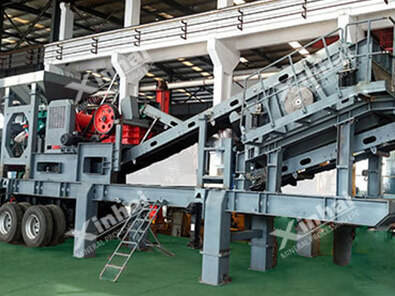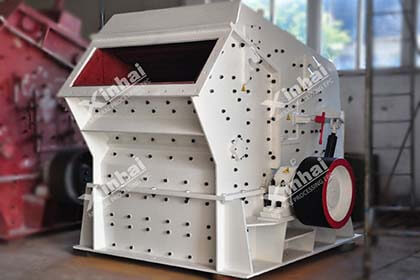Mineral Screening: The Complete Guide
 Chileen Gao
Chileen Gao
 Dec 28, 2022
Dec 28, 2022
 4718
4718
If you want to know more details about equipment, solutions, etc, please click the button below for free consultation, or leave your requirements!

(screening equipment in mineral processing plant)
The screening process is an essential part of the mineral processing. This article focuses on what screening is, the classification of screening, screening effects and the five main types of screening equipment.
01What Is Screening?
Back
Screening refers to the process of breaking up the material into different size pairs through one or several layers of screen surface.
In the screening process, the sieved raw material continuously into the screening machinery, then, less than the size of the screen hole material will be through the screen hole, this part of the material is the product of the screen; and greater than the size of the screen hole material will remain on the screen surface, and then from the screen surface continuously discharge, this part of the material is called the product of the screen.
The screening process is generally continuous.
02Classification of Screening
Back
Depending on the purpose of the application of screening and the occasion of use, screening can be classified as follows.
Pre-Screening and Check Screening
Pre-screening is the process of screening out the material with a qualifying particle size before crushing operations are carried out. This process is designed to avoid over-crushing of the material and to improve screening efficiency and reduce power consumption.
Check screening is the process of sieving out the material after it has been crushed. Its purpose is to screen out the unqualified bulk material and to ensure that the material with qualified particle size can enter the next stage of the grinding plant.
Stand-Alone Screening
When the screened product is supplied directly to the user as the final product, the screening process is called stand-alone screening. It is mainly used in the screening of coal, iron ore and building stone, especially for commercial coal.
Preparation Screening
Preparation screening occurs when the purpose of the screening is to provide a suitable size of material for the subsequent sorting operation. For example, before the crushed material enters the ball mill, it is screened to select the right size of material. Pre-screening is also a type of preparatory screening.
Desliming Screening
De-mud screening, also known as demineralisation screening, is a screening process in which fines are removed from loose materials or materials with water as raw materials, such as jigger coal and heavy media coal separation.
Dewatering Screening
Some materials will contain a large amount of water, such as slurry, slurry, etc., these materials as screening raw materials, the process of removing the water is dewatering screening, such as wet beneficiation will be carried out in the aqueous medium, concentrate dewatering process is essential.
Selective Screening
Selective screening is the process of separating materials according to particle size or other criteria (e.g. quality, etc.).
03Screening Effect
BackUsually, the most ideal screening effect is that all the material particles smaller than the screen hole pass through the screen and become the product under the screen, and all the particles larger than the screen hole cannot pass through the screen and remain as the product on the screen. At this point, the sieving efficiency is 100%.
However, in practice, the screening efficiency can be affected by a variety of reasons. For example, screening raw materials contain clay and water, so that some fine particles are bonded to coarse particles, so that they cannot pass through the screen to become the product on the screen; or, after the screening equipment has been used for a long time, the screen holes are constantly worn and become larger, and then the coarse particles that should have remained on the screen do pass through the screen holes to become the product under the screen. These effects can affect the screening effect and reduce the screening efficiency.
04Common Screening Equipment
Back
There is a wide variety of screening equipment. At present, most of the screening equipment used in mineral processing plants is vibrating screen, especially since the application of more central vibrating screen, cylindrical sieve, flat screen, arc sieve application is less. In recent years, the application of fine sieves has also gradually attracted attention, and more and more efficient screening equipment began to appear. The following mainly introduces several major screening equipment.
Circular Vibrating Screen
The circular vibrating screen is a screening machine with circular motion. It uses an eccentric shaft and eccentric block vibrator for smooth operation and high screening efficiency. In addition, it uses a wear-resistant rubber screen, which can make the material stuck in the screen holes jump out, preventing the screen holes from being blocked.
Circular vibrating screen is mainly used for material size classification, but also can be used for dewatering, desliming, desmearing, etc.. In mining, metallurgy, road construction, building materials, chemical industry, etc., all have applications.

(circular vibrating screen for mineral screening)
Self-Centred Vibrating Screen
The self-centred vibrating screen is a traditional and widely used screening machine, which is mostly used for medium to fine size materials. The screening equipment is made of wear-resistant rubber elastic limit parts, there are two forms of seat and hanging type. The amplitude of the equipment is large and the screening efficiency is high.
It is mainly used in mining, coal, metallurgy, building materials, chemical industry and other departments for the classification of medium and fine particle size.

(self centred vibrating screen for mineral screening)
DZS Linear Vibrating Screen
It is a vibrating screen with reciprocating motion of the screen box along the directional straight line, mostly used for screening of fine grain materials. Its motor power is small, generally only 1/4-1/5 of other types of sieve, but the screening efficiency and precision are high. The screen mesh is made of wear-resistant rubber material and has a long service life.
The linear vibrating screen is suitable for dewatering, de-sludging, de-liquorising and removing heavy media in heavy media beneficiation.

(dzs linear vibrating screen for mineralscreening)
High efficiency high Frequency Dewatering Screen
This equipment has a unique design, its screen surface is designed as a segment structure, the angle between each segment and the horizontal surface is different, which greatly improves the dewatering effect. Its vibrating motor has a small amplitude and high frequency, making its working performance very stable. Moreover, its screen is embedded, which is easy to install and partially replace.
High frequency vibrating fine screen
The high frequency vibrating fine screen has a high frequency vibrating screen surface with a frequency of 50Hz, an amplitude of 1-2mm and a vibration intensity of up to 8-10 times the acceleration of gravity, which is 2-3 times that of a normal vibrating screen. It has a strong self-cleaning ability of the screen surface, high screening efficiency and large handling capacity.
The equipment is mainly suitable for the classification of fine-grained materials and the dewatering of tailings, quartz sand and coal mud.
05Summary
BackScreening operations are very widely used, not only in mineral processing plants and coal processing plants, but also in construction, chemical and light industry sectors. The above introduces the concept, classification, effect and main equipment about screening, welcome to click the chat button to learn more about the minerals screening.
 +86 18716000713
+86 18716000713 xlyin@xinhaimining.net
xlyin@xinhaimining.net




 Message
Message Chat Now
Chat Now


















